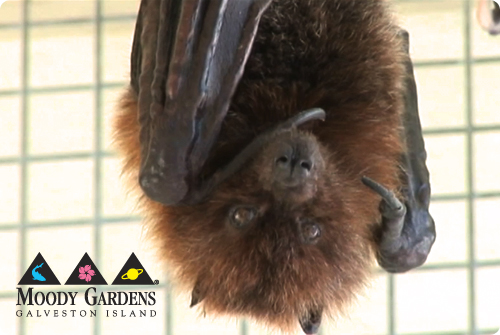BrewMasters International Beer Festival at Moody Gardens
Labor Day Weekend, September 2 – 5 WHAT: BrewMasters International Beer Festival, presented by Spec’s Wines, Spirits and Finer Foods! Held at Moody Gardens Hotel, Spa & Convention Center, the largest craft beer festival in Texas is a four-day celebration showcasing three signature events: the BrewTopia Beer Garden, the Brew HaHa Grand Tastings & Keg Korner, and BrewLicious in the Ballroom. Interactive activities include the BrewMasters 5K Rock & Run, a new kid’s zone, live music, beer and food pairing dinners featuring renowned chefs, educational seminars, and award-winning Brewmasters. To beer-lovers delight, Spec’s will bring in upwards of 20 Brewmasters/Founders and 80 Brew Brains to quench the literal and educational thirst of consumers interested in learning more about the festival’s 400 represented craft beers. More than 15,000 suds sippers are expected to hoist a mug at the craft beer bonanza.
WHAT: BrewMasters International Beer Festival, presented by Spec’s Wines, Spirits and Finer Foods! Held at Moody Gardens Hotel, Spa & Convention Center, the largest craft beer festival in Texas is a four-day celebration showcasing three signature events: the BrewTopia Beer Garden, the Brew HaHa Grand Tastings & Keg Korner, and BrewLicious in the Ballroom. Interactive activities include the BrewMasters 5K Rock & Run, a new kid’s zone, live music, beer and food pairing dinners featuring renowned chefs, educational seminars, and award-winning Brewmasters. To beer-lovers delight, Spec’s will bring in upwards of 20 Brewmasters/Founders and 80 Brew Brains to quench the literal and educational thirst of consumers interested in learning more about the festival’s 400 represented craft beers. More than 15,000 suds sippers are expected to hoist a mug at the craft beer bonanza.
WHEN: Labor Day Weekend, Friday thru Monday, September 2 to 5
WHERE: Moody Gardens Hotel, Spa & Convention Center, One Hope Boulevard, Galveston, 77554; (888-388-8484)
HIGHLIGHTS:
BREWTOPIA BEER GARDEN – Friday-Sunday, September 2-4, 4-10 p.m. Friday; noon-10 p.m. Sat/Sun
The family-friendly area under the big tent in the Oleander Bowl at Moody Gardens includes a new Krazy Kids Fun Zone, live music, food and of course beer! Entry to the BrewTopia Beer Garden is free, although the donation of canned goods or spare change is encouraged with contributions benefiting the Galveston County Food Bank in conjunction with hunger awareness month.
BREWTOPIA MUSIC LINE-UP:
Friday, Sept. 2
4:30-6:30 p.m. David Grace
7-10 p.m. The Line Up
Saturday, Sept. 3
Noon-2 p.m. Free Radicals
2:15-3:45 p.m. The Hit Squad
4-6:30 p.m. Wearemantis
7-8 p.m. Mr. Blacc Sheep and Bigga Staar
8:15-10 p.m. D.R.U.M.
Sunday, Sept. 4
Noon-2:30 p.m. The Navigators
3-5 p.m. Paul Ramirez Band
5:30-7:30 p.m. Texas Brass Band
8-9:30 p.m. ZWEE
BREWLICIOUS IN THE BALLROOM – Friday, September 2, 6:30 -10 p.m.
Located at the Moody Gardens Hotel’s Francis Anne Moody Ballroom, BrewLicious in the Ballroom will feature restaurants and chefs showcasing unique food and beer pairing samples. Tickets to the event are $55, with a VIP Premium Room upgrade ticket for $75.
PUB PARTY CRAWL – Friday, September 2, 8 p.m. start from Moody Gardens Hotel Lobby
Tour Galveston Island’s featured hot spots in an air conditioned bus and meet Brew Brains along the way while sampling their crafts. Tickets are $20; includes BrewMasters coozie, T-shirt and reserved seat on Moody Garden’s bus.
BREWMASTERS 5K ROCK & RUN – Saturday, September 3, 6 a.m. onsite registration; 7 a.m. walk/run
Party on the Pavement sponsored by Coca-Cola and held at Moody Gardens. The race will be a timed fun run, followed by a 5K walk. A post-event awards ceremony takes place at 8:45 a.m. and includes complimentary “fitness friendly” beer. Participants may register online at www.signmeupsports.com/77924 or download a race brochure at www.brewmastersbeerfest.com. Entry fees paid by August 27 are $20; fees paid August 28 thru race day are $25. The BrewMasters 5K Rock & Run benefits Galveston County Food Bank Gleanings From the Harvest, a non-profit whose mission is to find and distribute surplus food to organizations that serve the hungry.
TEXAS BREWERY TASTING TOUR – Saturday, September 3, 11:30 a.m. at Moody Gardens ConventionCenter Floral Rooms — Exclusive meet and greet and sampling with emerging and wildly successful Texas craft brewery Brewmasters representing No Label, Saint Arnold, Karbach Brewing, Southern Star, Austin Beerworks, Ranger Creek, Rahr & Sons, and Real Ale. Tickets $25; limited to 50 guests.
BREWHAHA GRAND TASTINGS & KEG KORNER – Saturday & Sunday, September 3-4, 2 p.m. VIP; 3-6:30 p.m. at Moody Gardens Convention Center — Sample some of the best of brews featuring 400 craft and specialty brews, more than 30 wines, and Brew Brain seminars on the Spec’s University stage. Admission to Brew HaHa is $35 in advance, $40 at the door, $75 for a VIP ticket, or purchase a VIP or general admission two-day Spec’s Hopper Pass.
BrewHaHa Brew Brain Seminars
Moderated by Justin Cody, Craft & High-end Import Buyer, Spec’s Wine, Spirits & Finer Foods
Grant Wood, Senior Brewing Manager, Samuel Adams (Boston, MA)
Gregg Berman, Owner, Clown Shoes Beer (Massachusetts)
Craig Pijanowski, Lead Brewer, Boulevard Brewing (Kansas City, MO)
Eric Warner, Founder and Brewmaster of Karbach Brewing – Houston’s newest Brewery opening in September and featuring their brews first at BrewMasters Craft Beer Festival
Rick Lovett, Owner/Founder, Indian Wells Brewing (Inyokem, CA)
John DeMers, Author & Radio Host, “Delicious Mischief” (Houston, TX)
BEER DINNERS & BRUNCH – Saturday & Sunday, September 3-4 at Shearn’s Restaurant/Moody Gardens
Shearn’s 4-course Beer Pairing Dinner to feature Samuel Adams beer (Saturday and Sunday at 6:30 p.m. for $85) and hosted by Samuel Adams Lead Brewer Grant Wood (appearance Saturday only); South of the Border Beer Brunch with Victoria, Modelo, Pacifica, and Corona Beer (Sunday only from 11 a.m. to 2 p.m. for $35) in the Frances Anne Moody Ballroom.
FIREWORKS SPECTACULAR – Sunday, September 4 at 8:45 p.m.
Celebrate Labor Day Weekend with a bang at this fireworks extravaganza held over the water at Moody Gardens. Free to the public.
BLUES & BREWS – Monday, September 5, noon to 4 p.m.
Craftapolooza Poolside Terrace at Moody Gardens Hotel with live music and happy hour craft beer pricing.
SPONSORS: The BrewMasters Craft Beer Festival is presented by Spec’s Wine, Spirits and Finer Foods. Additional sponsors include Moody Gardens Hotel, Spa and Convention Center, Alex Rodriguez Mercedes- Benz | Sprinter, Galveston Island Convention and Visitors Bureau, Toasted Head, CultureMap, Cumulus Radio (ESPN 97.5, KRBE 104.1, and KHJK 103.7, Draft Magazine, The Greensheet, WHERE Magazine, Houston Press, Shiner, Blue Moon, Leinenkugel’s, Great Brewers, DaFalco’s Home Wine and Beer Supplies, AT&T and Coca-Cola.
BOOK HOTEL: Moody Gardens Hotel is offering a special BrewMasters package for the festival weekend. To book a hotel package, visit www.moodygardenshotel.com or call 888-388-8484. For additional hotel reservation options, visit www.galveston.com.
MORE INFO & TICKETS: www.brewmastersbeerfest.com or call 713-557-5732











